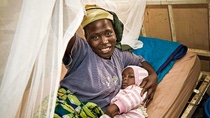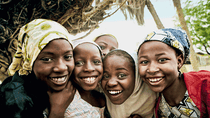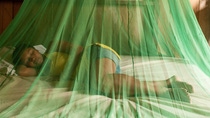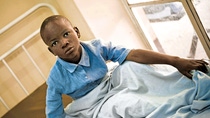Chi siamo
A vaccine against malaria?

Developing an anti-malaria vaccine has proved challenging – but after decades of research, two recent breakthroughs are inspiring new hope.
First, a vaccine called RTS,S from pharmaceutical company GlaxoSmithKline. According to a study published in the New England Journal of Medicine around 15,000 infants and young children were vaccinated with RTS,S with promising results. This is the first time a vaccine has reached this stage of clinical development. A long-term analysis is not yet available, but initial findings indicate that in one group of children, the risk of contracting malaria was reduced by as much as 56%. The number of severe cases of malaria also fell by 47%1.
The second recent breakthrough holds even more promise: Scientists at the Wellcome Trust Sanger Institute in Cambridge, U.K., have discovered a single receptor the parasite needs to be able to invade human blood cells and complete its life cycle in the human body. It is hoped that this discovery of the parasite’s ‘Achilles’ heel’ can be exploited to develop an effective vaccine that could contribute to the eradication of malaria worldwide.
However, experts say it’s too early to celebrate just yet: It is still unclear how a vaccine could be distributed to everyone, especially in the poorer areas of Africa. Vaccines like RTS,S must be refrigerated until they are administered and can only be given by trained professionals, so local infrastructure and healthcare systems are often not adequately equipped. The affected countries would have to rely on financial support from developed countries, and this has tailed off in recent years. As Dr. Oliver Moldenhauer of aid organization Médecins Sans Frontières remarked in an interview with the German online magazine Der Spiegel: “Admittedly, significant progress has been made, but that should not result in cuts to malaria prevention and treatment. We need more mosquito nets and drugs.”
1) Since this article was originally written in 2012 additional data on the efficacy of RTS,S has been released, please see here.


